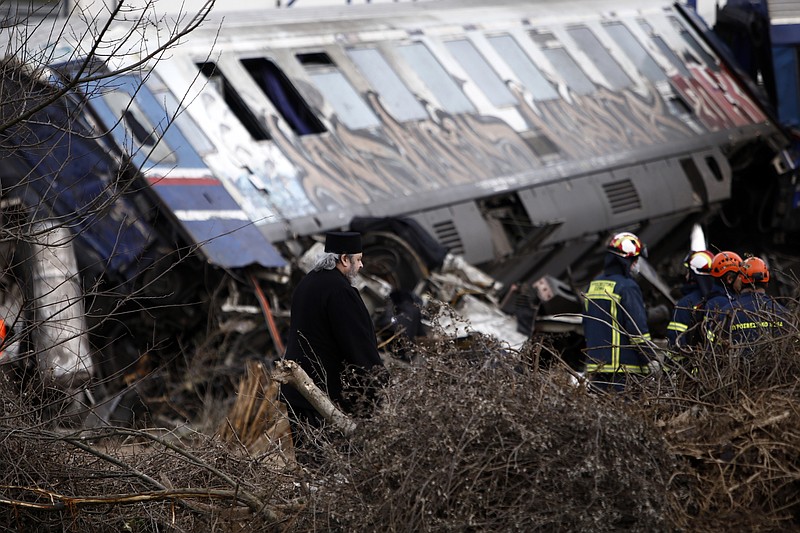By COSTAS KANTOURIS and NICHOLAS PAPHITIS
Associated Press
TEMPE, Greece (AP) -- Rescuers searched for survivors Wednesday in the mangled, burned-out wreckage of two trains that slammed into each other in northern Greece, killing at least 43 people and crumpling carriages into twisted steel knots in the country's deadliest rail crash on record.
The impact just before midnight Tuesday threw some passengers into ceilings and out the windows.
"My head hit the roof of the carriage with the jolt," Stefanos Gogakos, who was in a rear car, told state broadcaster ERT. He said windows shattered, showering riders with glass.
Greek Prime Minister Kyriakos Mitsotakis called the collision of the passenger train and a freight train "a horrific rail accident without precedent in our country," and pledged a full, independent investigation.
He said it appears the crash was "mainly due to a tragic human error."
The train from Athens to Thessaloniki was carrying 350 passengers, many of them students returning from raucous Carnival celebrations. While the track is double, both trains were traveling in opposite directions on the same line near the Vale of Tempe, a river valley about 380 kilometers (235 miles) north of Athens.
Authorities arrested the stationmaster at the train's last stop, in the city of Larissa. They did not release the man's name or the reason for the arrest, but the stationmaster is responsible for rail traffic on that stretch of the tracks.
Transportation Minister Kostas Karamanlis resigned, saying he was stepping down "as a basic indication of respect for the memory of the people who died so unfairly."
On Wednesday, rescuers turned to cranes and other heavy machinery to start moving large pieces of the trains, revealing more bodies and dismembered remains.
Larissa's chief coroner, Roubini Leondari, said so far 43 bodies had been brought to her for examination, and would require DNA identification as they were largely disfigured.
"Most (of the bodies) are young people," she told ERT. "They are in very bad condition."
Vassilis Polyzos, a local resident who said he was one of the first people on the scene, said both trains "were completely destroyed."
"There were many big pieces of steel," he said.
Greece's firefighting service said 57 people remained hospitalized late Wednesday, including six in intensive care. More than 15 others were discharged after receiving initial treatment.
More than 200 people who were unharmed or suffered minor injuries were taken by bus to Thessaloniki, 130 kilometers (80 miles) to the north. Police took their names as they arrived, in an effort to track anyone who may be missing.
Eight rail employees were among those killed in the crash, including the two drivers of the freight train and the two drivers of the passenger train, according to Greek Railroad Workers Union President Yannis Nitsas.
Emergency workers found several bodies dozens of meters (feet) away from the cars, ERT reported.

